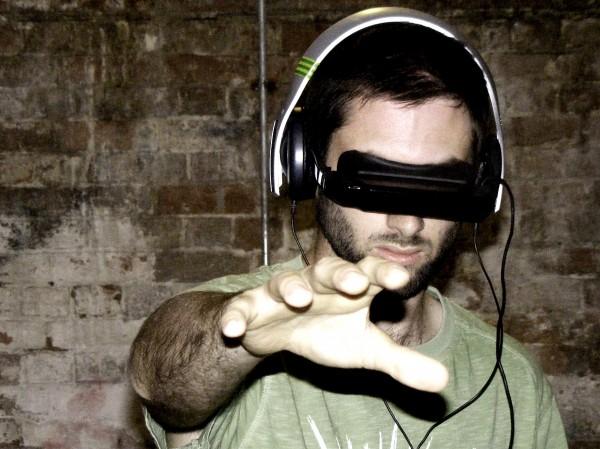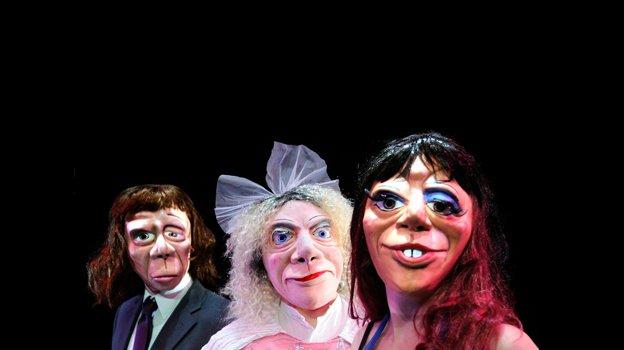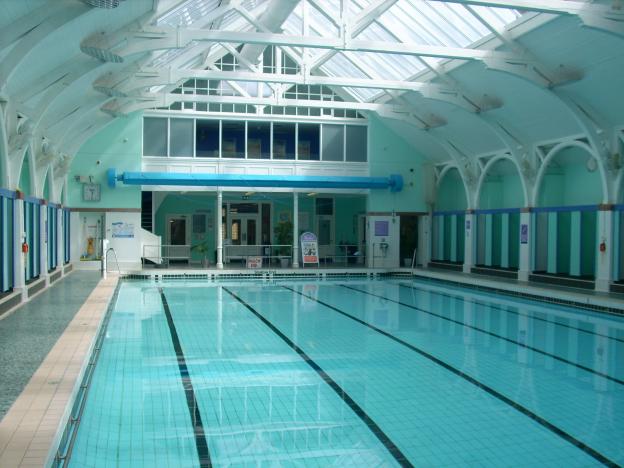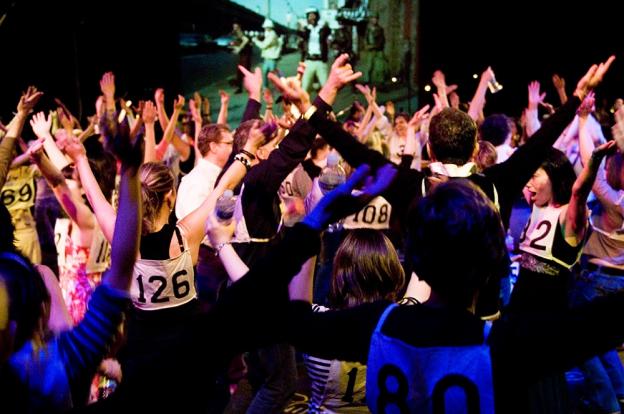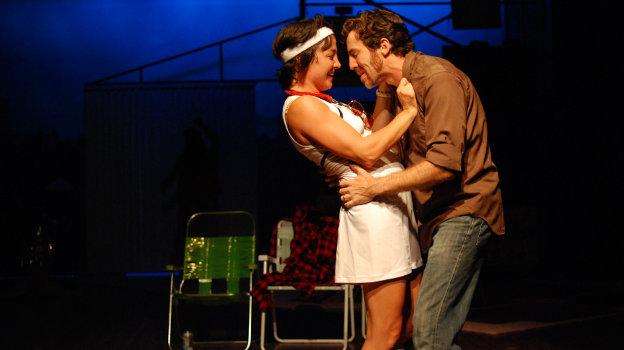Leaving Edinburgh mid-fest is always a weird one. It doesn’t seem right somehow, and hard to imagine that it all carries on without you. But it does! It does! Just take a look at the reviews section and you’ll see what a busy bunch of bees the TT reviewers have been, swarming all over Edinburgh.
Meanwhile, I’ve been enjoying a short blast of summer back in Brighton for a weekend of family birthdays – not to mention the Gay Pride celebrations, which are a reminder that theatre is everywhere, planned and unplanned. A favourite moment for me was witnessing a small line of people, stony-faced and resolute, standing in the middle of the cans-and-glitter strewed London Road bearing placards that said ‘You too can be born again,’ and ‘Jesus loves you and forgives you your sins’. They are surrounded by a ridiculously large number of policemen who are ‘protecting’ them, and then in an outer circle around the policemen are scores of singing and dancing men in pink tutus and tiaras. It’s Rio Carnival all over again!
But now it’s back to autumn in Edinburgh, with what the weatherman might call ‘squally rain showers’, a nippy wind, dark evenings, and the local kids back at school. Bye bye raw food Brighton and hello all-day-breakfast Edinburgh. Haggis, black pudding – bring it on!
Overheard in a café in the North Laine, Brighton:
Hippy in flip-flops: Did you hear the riots came to Brighton? Yeah – they took all the hummus…
Overheard in a café in Tollcross, Edinburgh:
Tourist: ‘Is there green tea?’
Waitress: ‘You want green tea? Are you kiddin’ me on?’
So – Edinburgh. Where was I? Ah yes, the wonderful Dance Marathon (see previous blog and review), one of many interactive / immersive shows here at the Fringe. With a longterm interest in this sort of work (as both artist and critic), I usually hunt out what there is on offer here every August.
I’ll say first of all that it is, I know, an issue for many theatre companies making the sort of larger immersive/site responsive pieces that take over a whole building, that Edinburgh Fringe is just not considered ‘d0-able’. Punchdrunk, for example, have said that they can’t consider ever coming to the Edinburgh Fringe. All respect therefore to Zecora Ura for getting Hotel Medea off the ground, an all-night throughout-the-site immersive show at new venue Summerhall. But talking to them, I know that it hasn’t been easy. One company member told me that the first week of rehearsals had to be put aside for cleaning the place! But what seemed like an impossible task at first has paid dividends.
Dreamthinkspeak managed the almost-impossible a few years back with their wonderful Total Theatre Award-winning Don’t Look Back, set in the Registry of Births, Deaths, and Marriages, Quite a feat as it was a working building, not an empty shell. 30 Bird Productions created a lovely piece, Plastic, in abandoned spaces underneath the Pleasance. And of course Edinburgh’s own Grid Iron have, for fifteen years now, been the leaders of the pack for Fringe site responsive / immersive works, with shows that I’ve seen including Those Eyes, That Mouth, set in a beautiful empty old house in the centre of New Town, and The Devil’s Larder, which took us on a performative tour of Debenhams on Princes Street. This year, Grid Iron are presenting What Remains? at the University of Edinburgh’s School of Anatomy, a sound-and-site led piece that is a showcase for the talents of composer David Paul Jones (see review).
Elsewhere, there is immersive and/or interactive work of a rather different sort. Il Pixel Rosso take the audience on a scary drive (all done with goggles and headphones) in And the Birds Fell From the Sky; and Me & the Machine bring two of their one-on-one filmic immersive pieces to Summerhall (including their TT Award shortlisted piece, When We Meet Again Introduced As Friends (pictured above). Also at Summerhall is the lovely Rotating in a Room of Images, by Lundahl and Seitl, in which the lone audience member is guided through a labyrinth of curtains by a disembodied voice, with interesting encounters along the way.
It’s a piece I saw previously at the BAC one-on-one festival, which also played host to the wonderful Adrian Howells, with The Pleasure of Being: Feeding, Washing, Holding – in which the audience member / participant is invited into a beautiful and sensuous environment of candles and rose petals, then lovingly washed, cradled and fed chocolate by Adrian. This piece is being presented in Edinburgh as part of the British Council Showcase, as is his new work, May I Have the Pleasure…? in which we are invited to join Adrian at a wedding reception for the last dance… I’m going tonight, and I can’t wait!
The thing I love most about Adrian Howells’ work is the loving care he takes of his audience. Other artists take a different approach. Ontroerend Goed, in new show Audience, prefer to provoke. My review – in which I expressed the view that although I have strongly supported earlier work by them, I feel that they have crossed a line into something morally unacceptable in Audience – seems to have provoked the company in turn. Well, it wouldn’t be Edinburgh without those controversies about morality and boundaries, I suppose. Last year it was Tim Crouch’s The Author (a show I whole-heartedly support as I feel the boundaries are in fact clear), the year before that it was also Ontroerend Goed with Internal (which I thought was the weakest part of the trilogy of small-scale interactive pieces they created, but nevertheless felt OK with), and the year before that was Badac subjecting its audience to a mock-Nazi-death-camp experience, with all sorts of artist/critic fisticuffs ensuing.
For those with an interest in immersive/interactive theatre, and the questions it raises about the artist/audience relationship, there’s a discussion at Forest Fringe thus Thursday, 18 August, ‘Interactivity in the age of the audience’ with panel speakers from Blast Theory, Hide & Seek, Lundahl and Seitl, New Media Scotland and guardian critic Lyn Gardner. The question on the table is: How can meaningful interaction with audiences truly respond to the choices and actions of its participants? It’s at the Forest Café, 3-4.30pm.
Other ongoing questions that might arise, and aren’t going to be answered easily: What is reasonable and acceptable in theatre? How far can an artist push the reality/fiction boundary? Do artists have a moral responsibility to care for and look after their audience? As audience, do we get a better understanding of something if our face is pushed into it, so that we come close to experience the emotion or experience portrayed, or is a bit of Brechtian alienation helpful in allowing us the space to reflect and make our own mind up?
Answers not on a postcard… Your comments welcomed!

